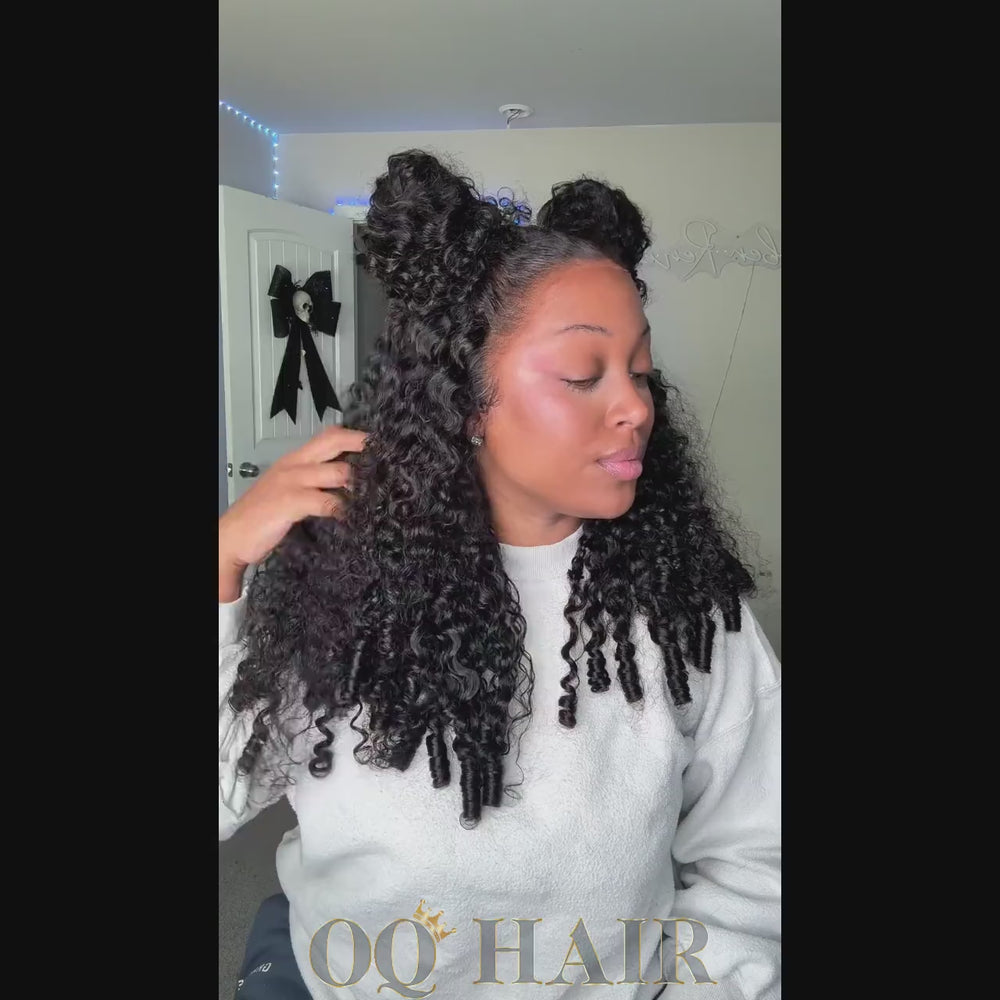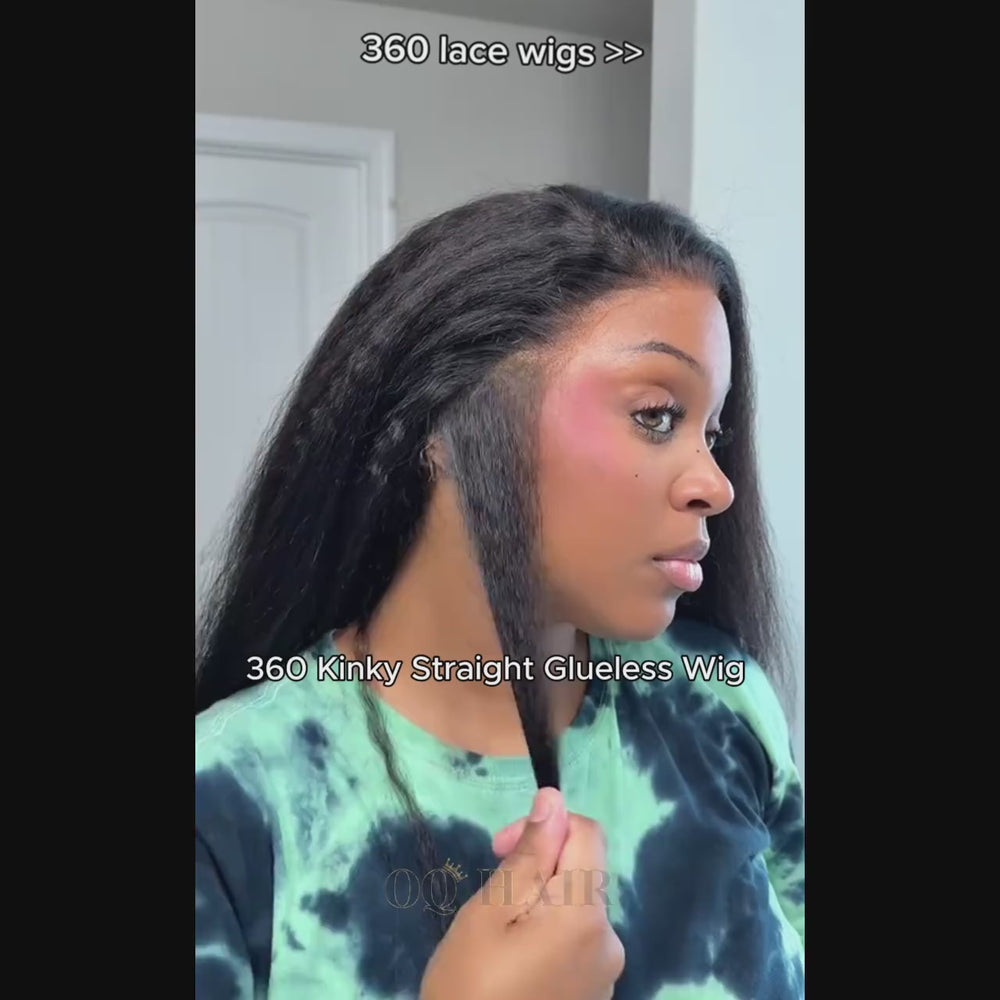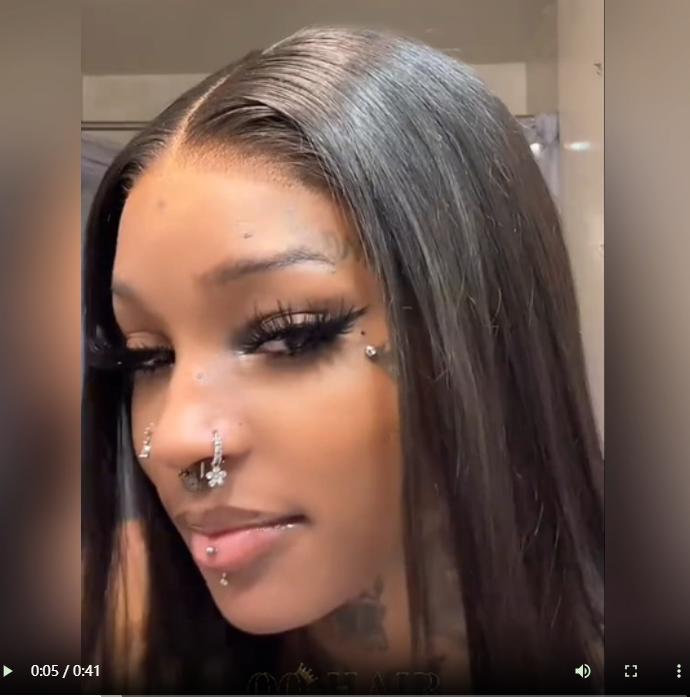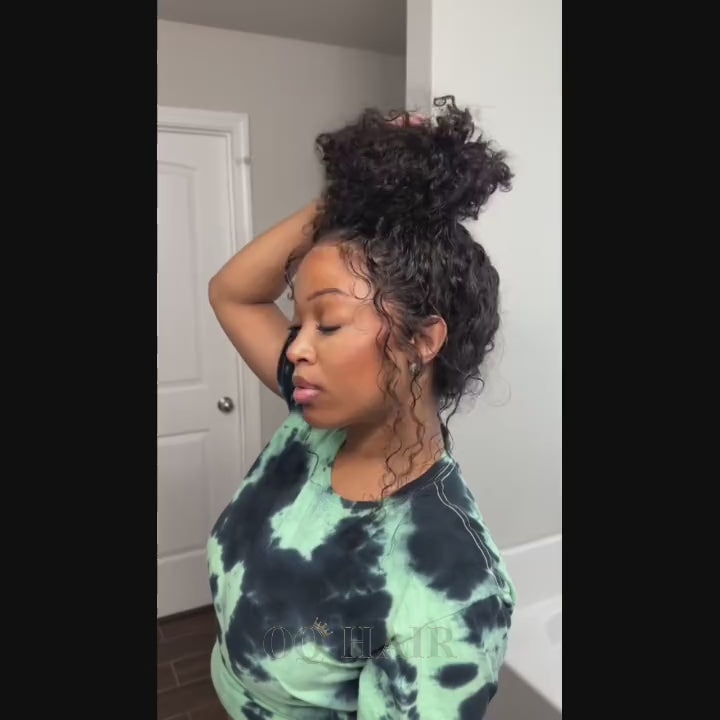How to Make A Wig Look Natural
Wearing wigs are a great approach to switch up your hairstyle and experiment with different looks. However, making wigs look as natural and realistic as possible is a challenge for many beginners. Read this article and find the answer about how to make a wig natural.

How to Make A Wig Look Natural
Tip 1 Choose the right wig
The first tip is to choose the right wig that suits your personal image. Look for a wig that matches your head size and hair texture as closely as possible. Also, consider the style of the wig and whether it fits your face shape and OOTD style.
In order to reach the best natural effect, it is better to choose a human hair wig. Human hair wigs usually look more natural than synthetic wigs because they are all made of 100% virgin human hair which soft and shine, and can be styled like your own hair. Lace front wigs are a great option as the design gives the illusion of the hairline looks like grows from your scalp. A headband wig is also a good choice. The headscarf can cover your hairline and flaws.
Tip 2 Bleach wig knots
Bleaching wig knots is a technique used to make the wig hairline look more natural and less noticeable. Knots are the small clusters of hair that are tied to the lace or mesh cap of the wig to secure the hair in place. These knots can create a noticeable grid-like pattern on the wig's hairline, which can look unnatural and detract from the wig's overall appearance.
Bleaching the knots involves applying a solution to the knots that lightens the color of the hair in the knots. This process makes the knots less visible, creating a more natural-looking. For your convenience, we provide pre-bleached human hair wigs with affordable price to meet your needs.
Bleach Steps
1. Start by mixing the bleach powder and developer in a plastic or glass bowl, following the instructions on the bleach kit. Be sure to wear disposable gloves to protect your hands during the process.
2. Put the wig on a wig stand or mannequin head, securing it in place. Use a brush or comb to part the hair to detangle the knots that need to be bleached. Apply the bleach mixture to the knots using a small brush or toothbrush, making sure to saturate the hair completely. Avoid getting the bleach on the rest of the wig's hair.
3. Leave the bleach on the knots for the recommended time according to the package, checking regularly to ensure that the bleach is not over-processing the hair. Rinse the bleach out of the hair with cool water, making sure to remove all the bleach from the hair. Avoid scrubbing the hair to prevent damage.
4. Shampoo and condition the wig, using a gentle, sulfate-free product to prevent further damage to the hair.Let the wig air dry or use a blow dryer on low heat, being careful not to apply too much heat, which can damage the hair.
5. Once the wig is dry, you can style it as desired, and you're ready to wear it.
Note: Bleaching wig knots can be a delicate process that requires careful attention to detail. It's important to follow the instructions on the bleach kit carefully and to test a small section of the hair before applying the bleach to the entire wig. If you're not confident in your ability to bleach the knots yourself, it's best to seek the help of a professional stylist.
Tip 3 Pluck your wig
Plucking can help to reduce the density of the hairline, making it less dense and more natural.
By removing few hair strands from the wig hairline, the wig can look less dense and create a more versatile styling option, such as pulled back into a ponytail or worn in a middle part. If you want to save time or are afraid of ruining the wig yourself, you can choose pre-plucked wigs.
Pluck Steps
1. Start by putting the wig on a wig stand or mannequin head to secure it in place. Make sure the wig is positioned correctly and is secure.
2. Use a fine-toothed comb to brush the wig's hair away from the hairline and identify the area that you want to pluck. This is typically the area closest to the forehead.
3. Using tweezers, start plucking individual hairs from the hairline, starting from the front and working your way back. Be careful not to pluck too many hairs at once, as this can create bald spots.
4. Continue plucking hairs until you have achieved the desired level of density and natural-looking hairline.
Note: Plucking a wig can be a time-consuming process, and it's essential to take your time to avoid damaging the wig. It's also important to use high-quality tweezers that are designed for plucking hair.
Tip 4 Trim the wig to suit your face shape
Just like with natural hair, a wig may need to be trimmed to suit your face shape. You can take the wig to a professional hair salon or do it yourself using sharp scissors. Start with small snips and work your way up until you achieve the desired length and shape. If you pursue a more natural effect, cut baby hairs on your wig is also a good choice. For example, you can cut bangs or baby hairs on your glueless wigs.
Tip 5 Adjust the wig to fit your head
To make a wig look natural, it needs to fit your head properly. Most wigs come with adjustable straps and combs, so make sure to adjust them to fit your head snugly. This will prevent the wig from slipping or shifting around on your head. If you are wearing full lace wigs, you can use wig glue or wig gel to attach it on your head.
Tip 6 Style the wig
Styling the wig is crucial in making it look natural. Start by combing or brushing the wig to remove any tangles or knots. Then, use a heat tool like curl iron or flat straighter to create natural-looking waves or curls. Remember to use heat protect-ant sprays, long time high heat can damage to the wig. You can also use hair products like hairspray or mousse to add texture and hold.
Tip 8 Blend the wig with your natural hair
To make the wig look even more natural, you'll need to blend it with your natural hair. Use a wig cap or a headband to cover your hairline and prevent it from showing through the wig.
Tip 9 Take care of the wig
Proper maintenance of the wig is essential in maintaining its natural appearance. Use a wig stand or mannequin head to store the wig when you're not wearing it. Use a wig brush or comb to remove any tangles and wash the wig regularly with a wig shampoo and conditioner.

Final Word
In conclusion, making a wig look natural takes some effort, but it's worth it for the end result. By above method you can achieve a natural-looking wig that will enhance your overall look.









